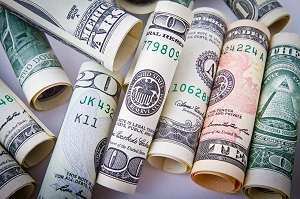 There are many things that you don’t know about money. For instance, the US dollar is made of cloth, not paper, and printed with the help of high-tech ink with trackable properties. The interesting thing is that only 8% of all the money in the world is physical actual cash. The rest is stored in a digital form. But that doesn’t change the fact that it is the main tool of influence and living in our modern times.
There are many things that you don’t know about money. For instance, the US dollar is made of cloth, not paper, and printed with the help of high-tech ink with trackable properties. The interesting thing is that only 8% of all the money in the world is physical actual cash. The rest is stored in a digital form. But that doesn’t change the fact that it is the main tool of influence and living in our modern times.
There are more than 180 currencies out there, and they come under the impact of different factors that manipulate the currencies’ strength, value, and stability. We’re going to examine the main attributes serving as game changers to better understand the financial world.
- Inflation
- Interest Rates
- The Deficit of the Current Account
- Political Situations
- Trade Terms
- Debt
This process presupposes that the value of money drops down, and the goods and services start rising in price. It implies that the currency’s purchasing power declines.
At present, among the countries with the lowest inflation, you can see Brunei, Israel, and Ireland. At the same time, the states with the highest inflation rate include Venezuela, Congo, and Angola.
The higher the interest rates are, the more value the currency acquires. Why? Because they attract foreign investors and capital input. This way, the exchange rates rise and cause the currency to drive up the price.
The trade balance between a certain state and its partners is called the current account. When it is tilted, it can negatively impact the currency. For example, when the country is spending more funds on the foreign trade than it’s actually earning, it means that the state requires more capital from other countries – so, it borrows some money and its currency value goes down.
Foreign investors are more eager to pump money into the countries that are stable and offer at least a steady growth. However, when it is under a political turmoil, the economy can be unpredictable which inevitably influences the cost of the currency.
The correlation between the export and import is very important for the currency fluctuations. If the export increases, consequently the demand for the country’s currency rises, and its value grows. At the same time, when the import is bigger than export, the situation affects the value conversely.
Once again, everything is connected with international relationships – when the country gains public debts because of funding the government or paying for public projects, it becomes less attractive for external investors. The reason for this is that debts cause inflation. There is also a case scenario that goes like this – the state prints money to compensate the debt, and such a sequence of events leads to the inflation as well.
As you can see, there are, at least, six factors that manipulate the value of the currency. Of course, there are others, but the above-mentioned ones are enough to get a better understanding of the financial processes of your country.